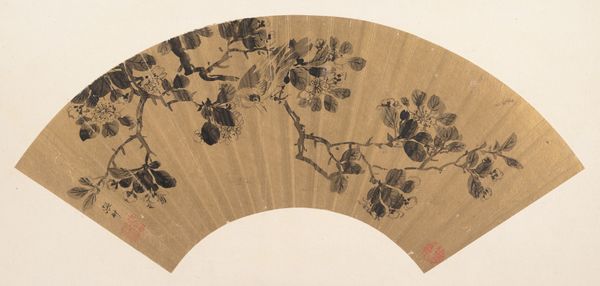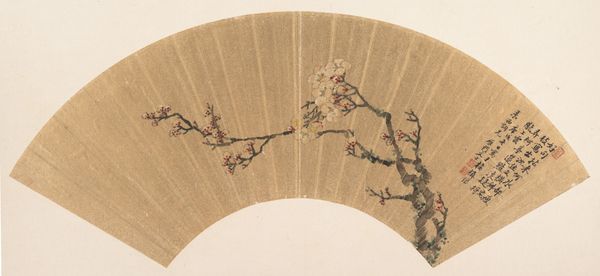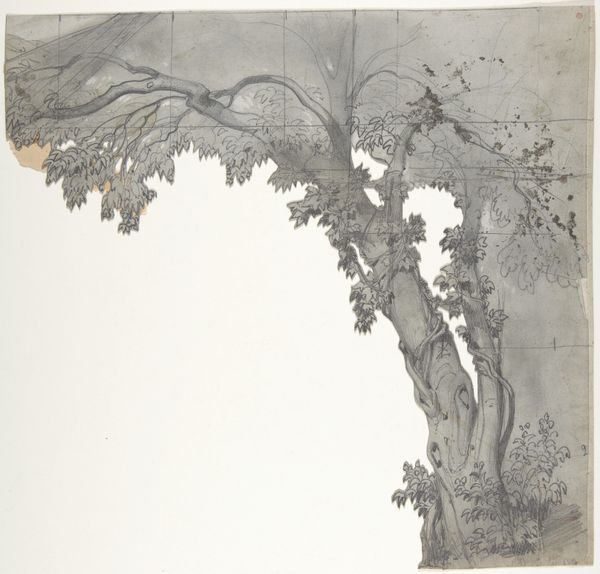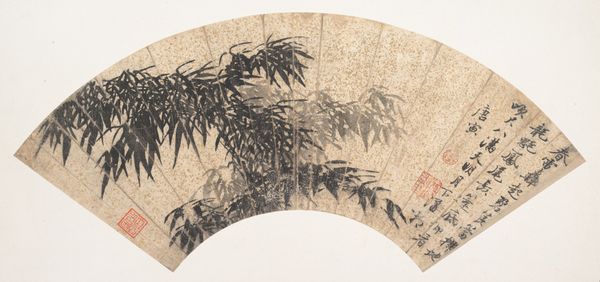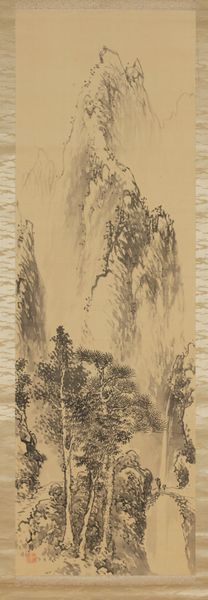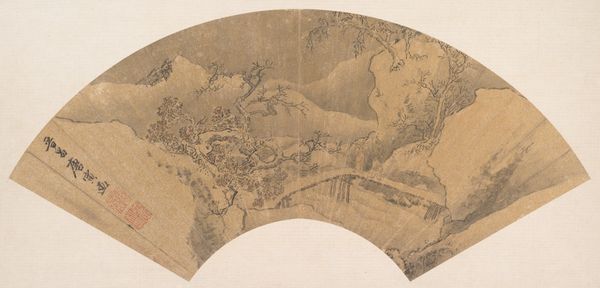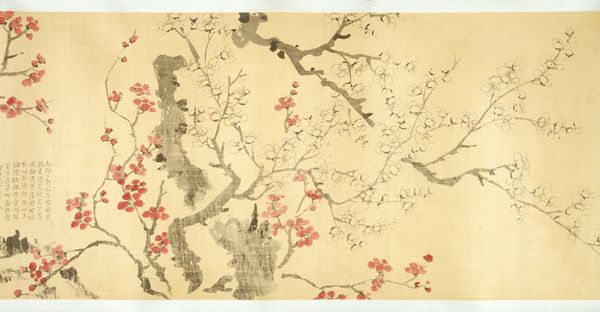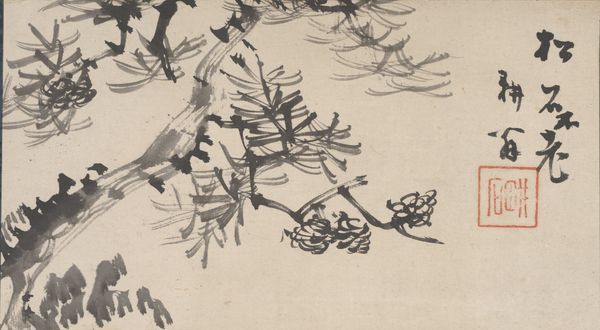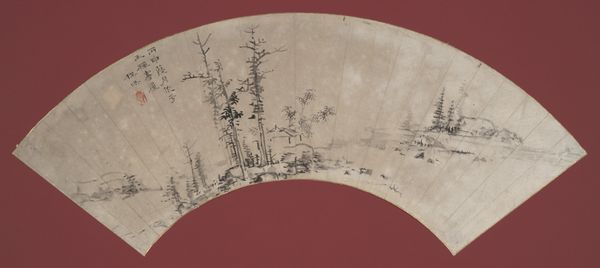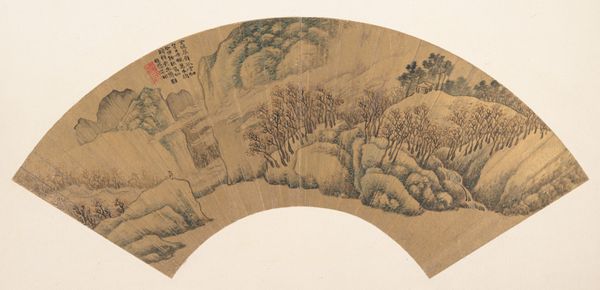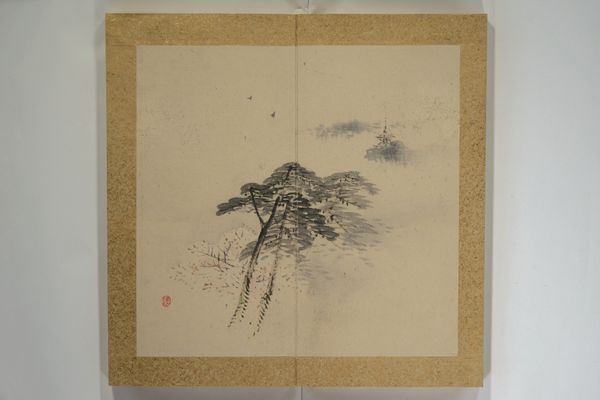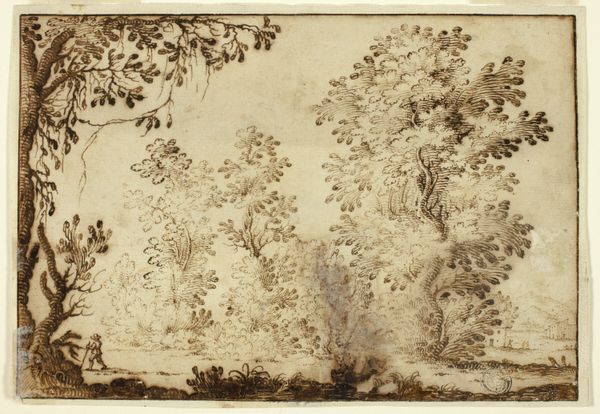
painting, watercolor, ink
#
painting
#
asian-art
#
landscape
#
watercolor
#
ink
Dimensions: 6 1/2 x 19 1/2 in. (16.5 x 49.5 cm)
Copyright: Public Domain
Editor: We’re looking at “Landscape with Fisherman,” created in 1643, by Qi Zhijia. It’s done with ink and watercolor on paper and rendered in a fan shape. The composition feels quiet, almost melancholic. What do you see in this piece, and how do you interpret its visual language? Curator: This isn't just a picturesque scene; it’s a carefully constructed visual argument about humanity’s place within the cosmos, deeply rooted in Daoist philosophy. Notice the fisherman, almost imperceptible, a tiny figure on the water. How does that scale speak to power dynamics, not just between humans and nature, but perhaps within the societal hierarchy of the time? The mist, the mountains… are these idealized spaces or commentaries on lived realities? Editor: So, it's not necessarily a literal landscape? It's more symbolic? Curator: Exactly. Consider the political context. 1643 places this artwork near the end of the Ming Dynasty, a time of intense social upheaval and political instability. Are those blurred edges of the mountains and the insubstantial form of the fisherman suggestive of a dissolving order, a world in flux? Are the sparse details meant to be a subtle act of resistance, by drawing away from worldly subjects? What silences exist here? Editor: The fisherman, who I initially saw as peaceful, now seems almost vulnerable within such a vast landscape...or perhaps he is quietly resisting, finding solace in nature? Curator: Precisely. The beauty and perceived harmony in the landscape contrast the societal imbalances during this era. It gives us space to think about how nature has long served as a canvas for expressing political and personal desires or frustrations. Editor: I see the landscape paintings of the era in an entirely different light. Thanks. Curator: Indeed. This is what can happen when we apply interdisciplinary theoretical models.
Comments
No comments
Be the first to comment and join the conversation on the ultimate creative platform.
